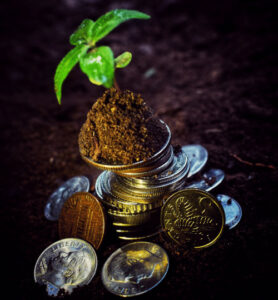
Gold has long held its place as a universal symbol of wealth, security, and enduring value. In the face of modern economic uncertainty, marked by inflationary pressures, shifting geopolitical alliances, and volatile energy markets, gold is again being recognised for its role as a safe-haven asset. Nowhere is this resurgence more relevant or more dynamic than in Africa.
Home to vast reserves and some of the world’s most prolific gold-producing regions, Africa has become a strategic focal point for investors. From the established mines of South Africa to the emerging fields of Sudan, Mali, and Burkina Faso, the continent offers a compelling mix of high returns and formidable challenges. Political instability, inconsistent regulation, and informal economies all shape the evolving landscape.
Africa contributes over 20% of global gold production and remains one of the most resource-rich continents in the world. The allure for investors lies in a combination of untapped deposits, favourable production costs, and increasing efforts by governments to open their markets to foreign capital.
Countries such as Ghana, Mali, Burkina Faso, and Tanzania continue to attract exploration due to the scale of their reserves. Much of the continent remains underexplored geologically, providing significant potential for future discoveries. Africa also benefits from demographic advantages. A young and growing workforce, combined with expanding infrastructure, is making mining operations more feasible and cost-effective than in other parts of the world.
Additionally, Africa offers strategic diversification. As markets in the West become more saturated or tightly regulated, Africa presents geographic and operational alternatives for investors looking to spread risk across global assets.
Investment Opportunities in African Gold
There are multiple entry points for those seeking exposure to Africa’s gold sector, each with its own balance of risk and reward.
Mining Equities and Shares
One of the most straightforward ways to invest in African gold is through publicly listed mining companies. Major firms such as AngloGold Ashanti and Harmony Gold in South Africa, Endeavour Mining in Côte d’Ivoire and Burkina Faso, and Hummingbird Resources in Mali all offer investor access via major global exchanges.
These equities provide liquidity and potential dividends, making them attractive to both institutional and retail investors. However, their share prices are also susceptible to market-wide volatility and regional instability, which must be factored into any investment decision.
Exchange-Traded Funds (ETFs)
For investors seeking a diversified, lower-risk approach, gold-focused ETFs that include African exposure are a viable option. ETFs bundle various mining equities or commodity-based instruments, providing exposure across geographies and operators.
While these funds offer lower fees and broader diversification, they often dilute specific exposure to African markets. Their performance is also linked to the structure of the underlying index, which may or may not favour African miners.
Junior Mining and Exploration Companies
At the higher end of the risk-reward spectrum are junior miners. These companies focus on exploration and early-stage development and can deliver significant gains if successful. Examples include Asante Gold Corporation in Ghana and Roscan Gold Corporation in Mali. However, junior miners often operate with limited capital and are highly sensitive to market conditions. They also face greater operational risk, including political changes and licensing delays.
Physical Gold and Bullion
Some investors, particularly sovereign funds and high-net-worth individuals, still opt for physical gold, be it bullion or coins. This approach eliminates counterparty risk and serves as a hedge against currency devaluation, which is especially relevant in volatile economies. However, logistical considerations such as secure storage, transport, and regulatory limitations on import/export make this route less attractive to institutional investors.
Royalty and Streaming Agreements
Another growing area of interest is royalty and streaming deals. In these models, investors provide upfront capital to mining operations in exchange for a fixed percentage of future production or revenues. Companies like Franco-Nevada and Wheaton Precious Metals are increasingly engaging in Africa, attracted by the continent’s production growth and capital needs. These agreements offer more predictable returns and less exposure to operational management, though they depend heavily on the success of the mining projects involved.
Risks and Considerations
 Political Risk
Political Risk
Frequent leadership changes, social unrest, and policy shifts can rapidly alter the investment climate. Mali’s new mining code is a case in point, disrupting established agreements and raising operational costs.
Regulatory Uncertainty
Mining laws and tax regimes vary widely across the continent and are prone to abrupt changes. Export restrictions or nationalisation efforts can have serious financial implications.
Currency Fluctuations
Gold is typically priced in US dollars, while operational costs occur in local currencies. This creates both opportunities and risks due to exchange rate volatility.
Environmental and Social Governance (ESG)
Global investors are increasingly focused on ESG metrics. Practices like mercury usage in artisanal mining, child labour, and ecological destruction can trigger reputational and legal consequences.
Infrastructure Challenges
Transport, energy, and water systems are often underdeveloped in mining regions, raising the cost and complexity of operations.
Best Practices for Investors
To mitigate risk and enhance returns, investors should commit to thorough due diligence. This includes understanding local laws, building strong community ties, and prioritising ESG standards. Diversification across countries and investment vehicles can reduce exposure to localised shocks. Engaging with local stakeholders, governments, civil society, and communities, is essential for long-term success. Keeping abreast of policy shifts and geopolitical developments is equally important in this fast-changing landscape.
Investing in African gold in 2025 presents a compelling opportunity, especially in a world hungry for safe-haven assets and ethically sourced resources. With the right strategies, Africa’s vast gold reserves can yield not just profits but also drive development, infrastructure, and sustainability. The continent’s gold is more than a glittering asset, it’s a symbol of potential, waiting to be realised responsibly. For investors with vision, patience, and ethical foresight, Africa offers one of the last great frontiers in global mining.



